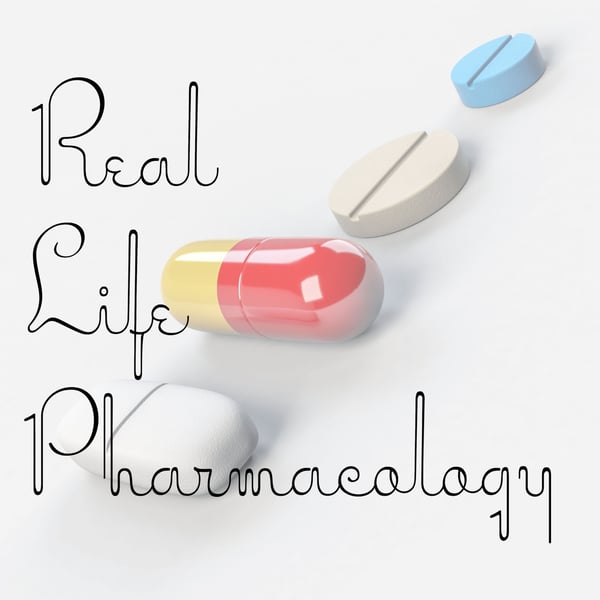Amiodarone RLP Episode 014
Real Life Pharmacology - Pharmacology Education for Health Care Professionals
Eric Christianson, PharmD; Pharmacology Expert and Clinical Pharmacist
5 • 716 Ratings
🗓️ 10 May 2018
⏱️ 9 minutes
🧾️ Download transcript
Summary
All subscribers to the website/podcast will get access to a FREE Top 200 Drug Study Guide where I highlight the 3 most highly testable pearls from each medication (this is a 31 page PDF!) In addition, you'll get a free 100 question pharmacology test. Both resources are free, simply for following the podcast! What are you waiting for? Click Here to Subscribe
Transcript
Click on a timestamp to play from that location
| 0:00.0 | On today's episode of real-life pharmacology, I'm going to talk about the anti-arhythmic amyodorone. |
| 0:09.0 | Ami-odurone is a class three antihrythmic. |
| 0:13.0 | It's got a few different mechanisms of action, including affecting sodium and potassium, as well as potentially calcium channels, |
| 0:24.2 | and possibly has some mild beta and alpha blocking activity as well. Amioderone is used to help |
| 0:35.0 | with rhythm control in atrophibulation. |
| 0:38.3 | Now, if you remember atrophibulation, |
| 0:41.3 | the usual first step is to try to do rate control |
| 0:45.3 | with beta blockers and calcium channel blockers |
| 0:48.3 | like Deltiasm and verapamil. |
| 0:51.3 | If that fails, if that's unsuccessful, if patients continue to have symptoms, |
| 0:57.8 | amyodorone may be considered in this setting to help with that rhythm control. |
| 1:06.1 | Now there are lots of unique clinical pearls with amiodorone. |
| 1:11.6 | So first let's kind of talk side effects and pharmacokinetics. |
| 1:17.6 | Amioderone, one thing really important to remember is that it has an incredibly long half-life. |
| 1:25.6 | So it may take in the ballpark of 40 to 60 days for half of that drug to be |
| 1:34.3 | eliminated from the body. And this can play a significant role in complicating things like drug |
| 1:42.3 | interactions, which I definitely will talk about drug interactions |
| 1:46.0 | coming up a little bit later on here. As far as adverse effects go, you definitely need to |
| 1:54.3 | remember thyroid function with amyodorone. So checking that TSA can be very important, making sure that we're maintaining |
| 2:03.0 | normal levels there and not having signs or symptoms of hyperthyroid or hypothyroid. I will say in |
| 2:11.8 | clinical practice, amyodorone has been associated with hyperthyroidism, but I can tell you that I'm much more commonly |
| 2:21.9 | see in practice it cause hypothyroidism. Remember, that's an elevated T.S.H. Another potential |
... |
Please login to see the full transcript.
Disclaimer: The podcast and artwork embedded on this page are from Eric Christianson, PharmD; Pharmacology Expert and Clinical Pharmacist, and are the property of its owner and not affiliated with or endorsed by Tapesearch.
Generated transcripts are the property of Eric Christianson, PharmD; Pharmacology Expert and Clinical Pharmacist and are distributed freely under the Fair Use doctrine. Transcripts generated by Tapesearch are not guaranteed to be accurate.
Copyright © Tapesearch 2025.

